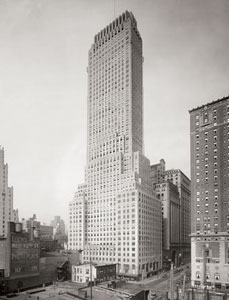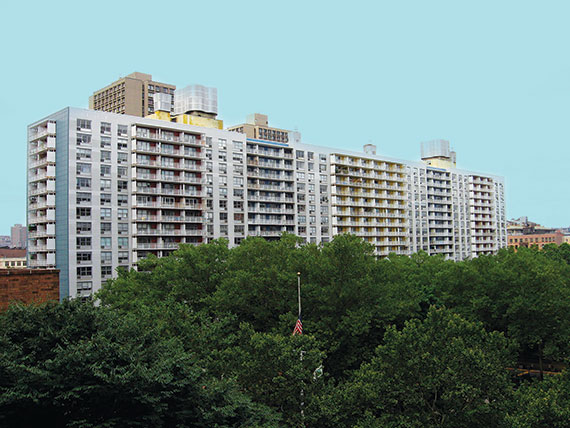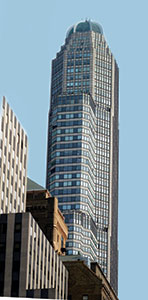Trending
This month in real estate history
The anti-skyscraper debate ignites, Washington Square Village takes shape, and more...

1928: City Club of NY reprints anti-skyscraper article
The City Club of New York reprinted 87 years ago this month a Vanity Fair article that blasted skyscrapers as “monsters” that would lead to the “decline and ultimate death of New York City.” Deems Taylor, a composer and music critic, compared skyscrapers to a plague on the level of “ancient city scourges” like “cholera, yellow fever, tuberculosis and slums.” He was especially concerned about sidewalk congestion and traffic jams, which he blamed on the ever-increasing density caused by new skyscrapers like the 625-foot-tall Chanin Building. Others voiced their admiration for the lofty buildings. George Sweeny, president of the 42nd Street Property Owners, said he was optimistic about the future: “42nd Street is on its way, and nothing can stop it.” A director at the Charles Noyes brokerage firm said skyscrapers combined utility and beauty and added character to the skyline. But Taylor would have none of it. He said ubiquitous skyscrapers would eventually lead to a mass migration of people from New York City.

Washington Square Village
1957: Washington Square Village created to replace blight
The 12-acre site that would become Washington Square Village was dedicated by the city in a ceremony 58 years ago this month. Three 17-story middle-income apartment buildings were to be constructed on the site as part of the $75 million project. Altogether, the buildings were to contain 2,004 apartments and projected to rake in $2.4 million a year in real estate taxes — more than 40 times the amount collected annually from the owners of the 191 old stores and apartments torn down to make way for the project, the New York Times reported. The site was dedicated under the National Housing Act, which allowed cities to purchase properties in blighted neighborhoods and sell them at low rates to sponsors. City Construction Coordinator Robert Moses hailed the project as a major step forward in obliterating slums. Two years later, NYU paid $25 million for all of Washington Square Village. It acquired the two finished buildings and planned a middle-income cooperative on land set aside for the third building. The new apartments would be made available to NYU faculty families as vacancies occurred. Perplexed brokers wondered why the sponsors agreed to sell the undeveloped land to NYU for such a low price. The sponsors argued that their main motive was helping the university get much-needed housing.
1990: CitySpire is first building to be fined for whistling

CitySpire
CitySpire became the first building in the history of New York City to be fined for whistling 25 years ago this month. The 72-story skyscraper at West 56th Street and Seventh Avenue was generating a high-pitched whistle that could be heard as far away as Third Avenue. At first, no one knew where the wail was coming from. “I’ve been all over the street trying to follow the noise,” said Anthony Mazzola, the editor-in-chief of Harper’s Bazaar magazine at the time. “You think you’re in the loony bin.” The Department of Environmental Protection received hundreds of complaints about the noise and sent out inspectors, who were able to determine that CitySpire’s green eight-sided dome was the source. Wind blew over the dome’s louvers, creating the loud whistle. Evan Eichner, the building’s developer, faced an $880-a-day fine for the noise violation. The problem was ultimately fixed by removing every other louver in the cooling tower.




